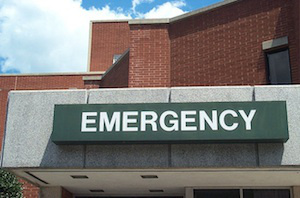How To Avoid An Emergency Room Bill That Sends You Back To The E.R.
Emergency room bills bring a special sort of sticker shock, because they don’t usually show up until weeks later, and then come packed with all sorts of over-inflated fees and add-ons. The New York Times calls them “notoriously high and perplexing,” and although it’s unlikely you’ll ever end up paying the full amount listed on the bill, there are strategies you can use to bring that initial figure down.
First, don’t go to the E.R. unless it really is an emergency. The Times writes, “If your situation is not dire — you twisted your ankle or have a persistent sore throat, say, or your child receives a small burn — call your doctor first and ask for advice.” If you can’t reach your doctor, try calling your insurer’s nurse triage hotline, or else go to an urgent care center where the prices should be considerably lower. (You can find these places at www.itriagehealth.com.)
You should also look over the bill to make sure you weren’t charged for unnecessary treatment, or billed at a higher treatment level than your injury called for.
And finally, call the hospital quickly and negotiate a lower payment–many hospitals will be eager to work with you, since that helps ensure that they’ll actually get paid.
“Demystifying, and Maybe Decreasing, the Emergency Room Bill” [New York Times]
Want more consumer news? Visit our parent organization, Consumer Reports, for the latest on scams, recalls, and other consumer issues.


